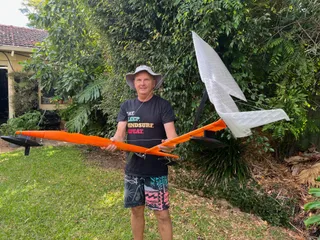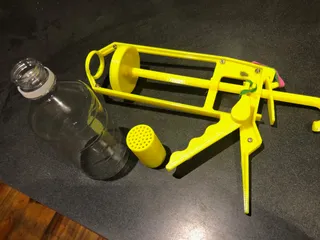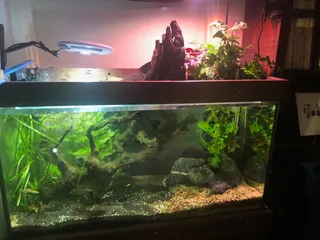Powerbox to Tuttle drill and shaping guides
Description
PDFThese drill guides are used to drill the holes in a Powerbox fin in order to convert it to Tuttle or universal. They are meant to help when using this adapter. https://www.printables.com/model/491976-powerbox-to-tuttleuniversal-converter
There are two guides, one to drill a 4mm pilot hole and one to drill the final 6mm hole. Either of the guides can be used to drill the brass nut holes. Originally I tried just the 4mm pilot hole and then slowly drilling out the holes using 4.5, 5, 5.5 then 6mm drills but for the front tuttle hole as the material is so thin the hole always seems to veer to one side of the other no matter how perfectly the pilot hole is aligned. The 6mm jig ensures a perfectly centred hole. (You may get away using just one jig and drilling the 6mm hole straight away but for fins costing in excess of $300 its worth printing both jigs)
Its best to print in orientation shown with support material as shown but my printer managed ok without supports.
The 4mm version uses 5mm x 0.45 brass tube to sleeve the main holes and the 6mm version uses 7mm (8) Aluminium tube as sleeve. The sleeves just protect the print from the drill bits so they will last a lot longer.
Use as follows:-
- First use the Powerbox connection to lock the jig in place. Please note that for the 5 Powerbox connections I did, all of them had different cutouts and none of them matched the drawing floating around on the internet on which the jig is based. You will most likely need to space out the inside of the jig with the spacers. Not doing so will distort the jig and cause misalignment of the holes. You can tell the distortion by placing a straight edge along the bottom after securing the jig. If it's not straight then you need to add spacers to the inside of the jig. You will know you have a good result when the bottom is straight and there are no gaps at front and back. The fin should absolutely no wiggle before you proceed further.
- Drill the 4mm pilot holes. You probably will need a long series drill to drill all the way but you can probably get away with standard length drill to drill the tricky bit. Best way to drill is horizontally pressing down on the jig with one hand, or putting the jig in vice to ensure nothing can move.
- Drill the 3mm pilot holes for the brass nuts using one side of the jig. The jig helps ensure the fin is horizontal and using a drill press ensures the holes are straight.
- Drill the 9mm holes for the brass nuts using the other side of the jig. It is better to slightly drill into the print to sure you don't get breakout on the other side like I did initially.
- Switch to the 6mm jig and drill the 6mm tuttle holes.
- Grind (using an 80grit flapper) or sand the front and back of the Powerbox flush with the jig then remove the jig.
- Fit the brass nuts and test their position with 6mm screws/bolts.
- Next step is to drill the ¼" radius for the tuttle. The jig is meant as a guide only as the radius tapers to nothing on the Powerbox the further you get away from the bottom of board interface. Best is you do this step SLOWLY with a sander and fit to your board. You want to do this step and get a snug fit before adding the adapter. I've attached the Tuttle and Powerbox drawings. I made sure I had to use the tuttle bolts to pull the fin in before fitting the adapter to ensure the most snug fit possible.
- Fit the adapter and test fit.
Model origin
The author marked this model as their own original creation.




